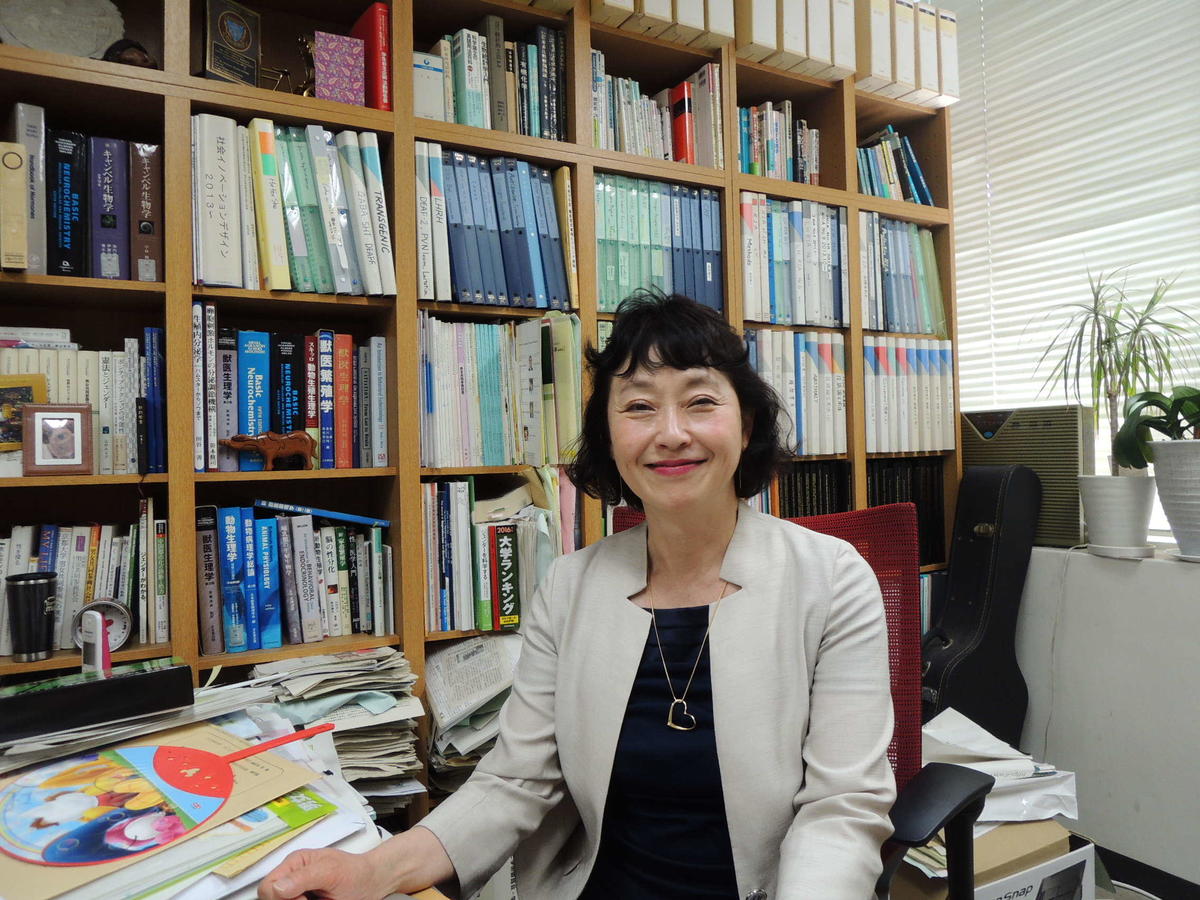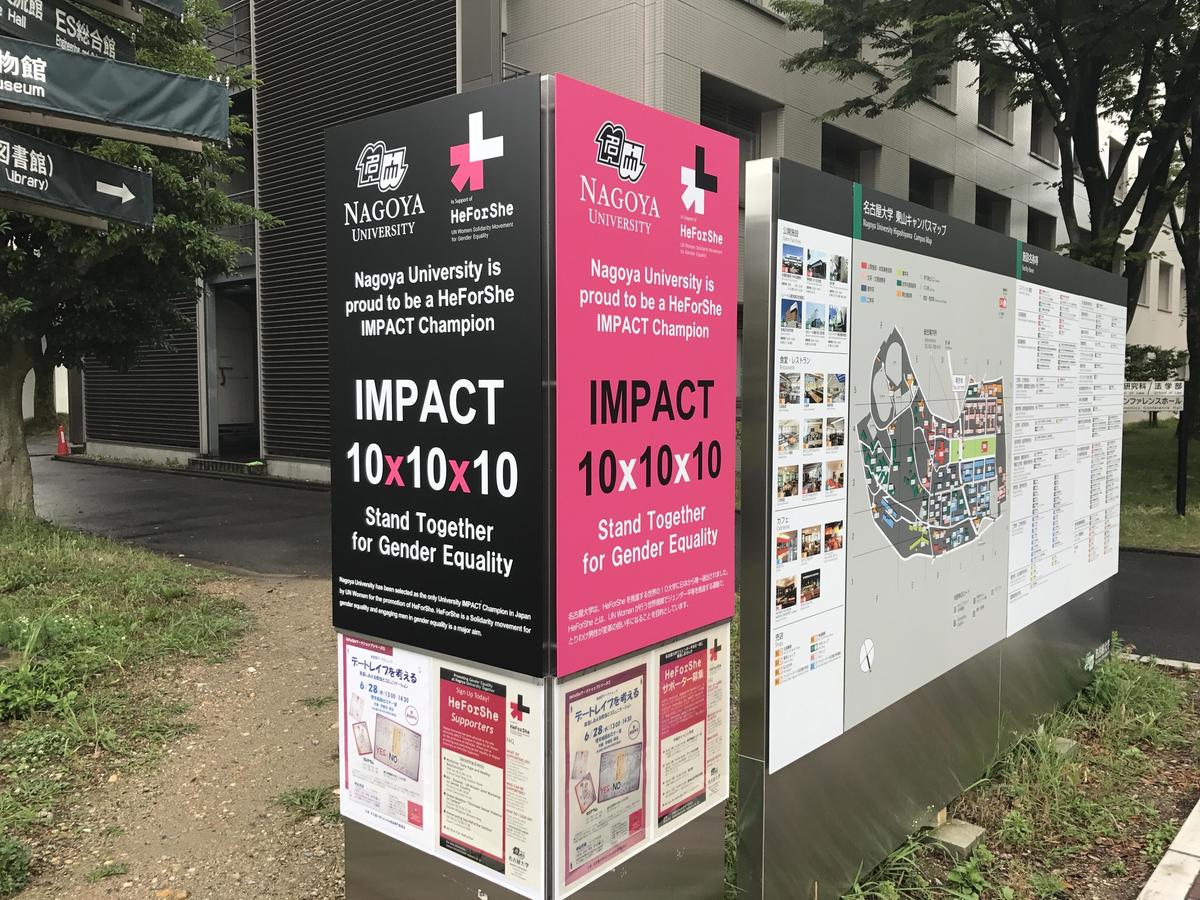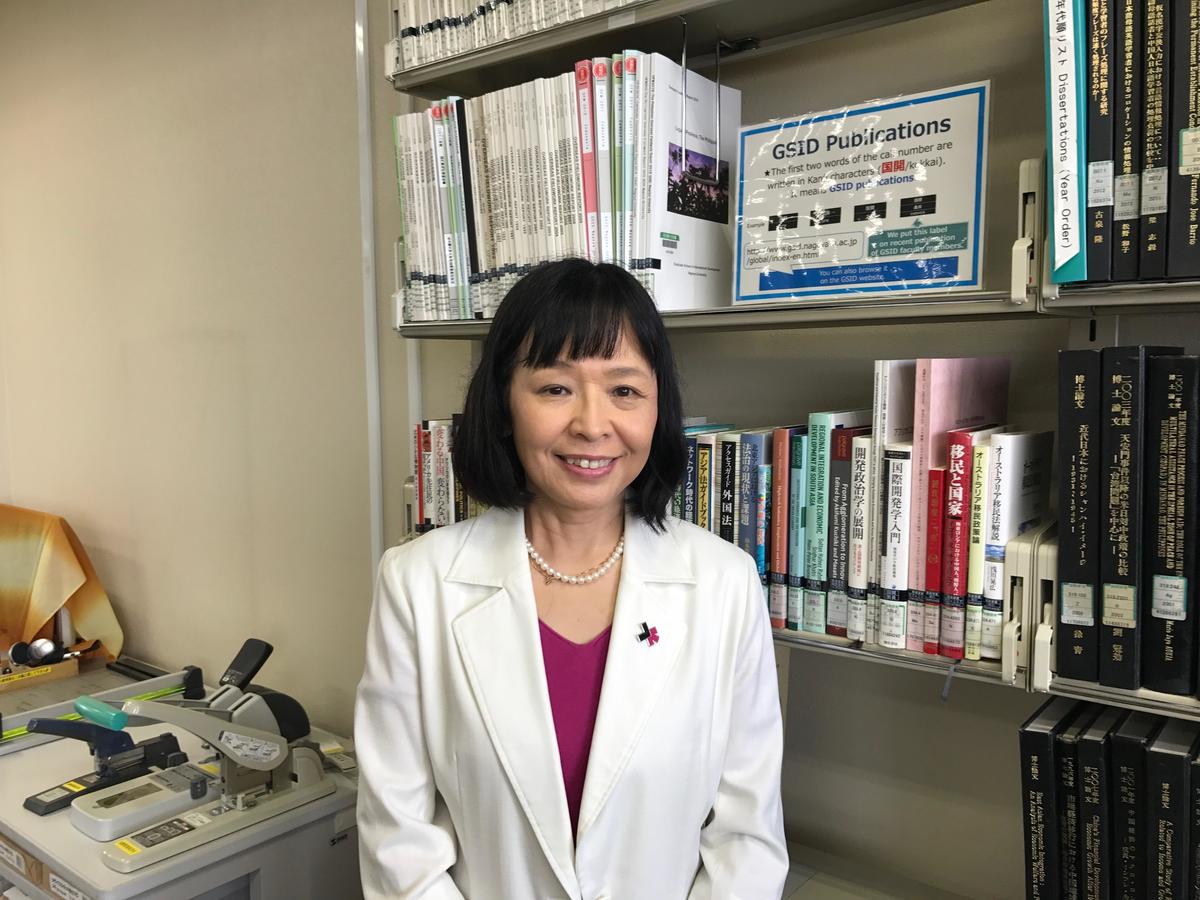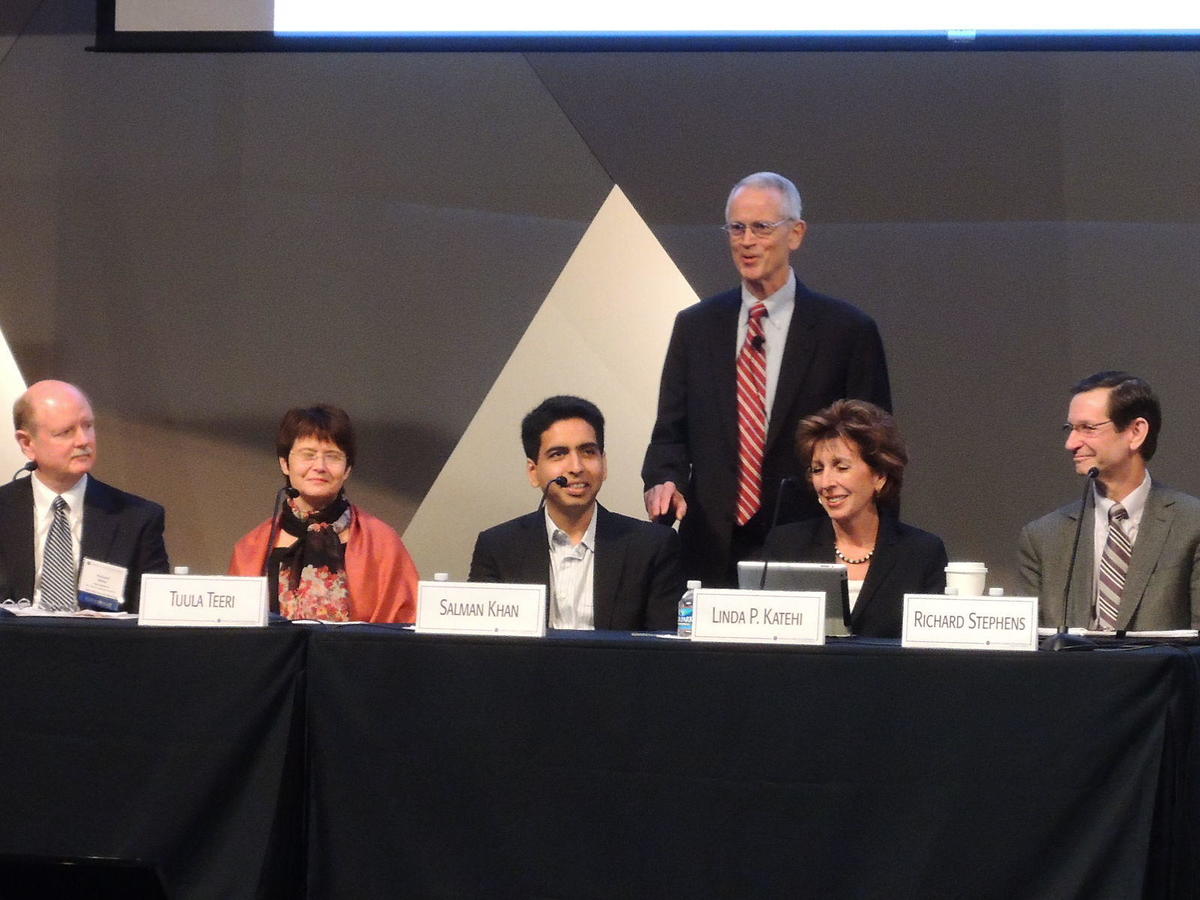July 3, 2017
All Eyes on Women's Empowerment in Meidai
Speaking of Meidai, the Nobel Prize might typically come to mind, but my Tokyo acquaintances countered with "Asia comes to mind", and even "women comes to mind." The latter response chiefly came from women. And University President Seiichi Matsuo says that topics that he was asked to talk about were the Nobel Prize and gender equality in Meidai during an interview in China last year. It seems that the university's gender equality initiative has become synonymous with Meidai here and abroad.
Meidai's efforts toward gender equality have just reached a new milestone. First, the Office for Gender Equality had been upgraded to the Center for Gender Equality in July 1. Along with its previous support work, the center will carry out research and education, and act as a hub for various activities in Japan and the rest of the world. The Gender Research Library will open at the end of October. Housing up to 40,000 gender-related books, the library is also intended to be a hub for gender research and education not just for the university, but also for Japan and beyond. The two-story building under construction along Yamanote Street in Higashiyama Campus is being built by donations.
Along with it, the Gender Equality Support Fund was launched in June with the generous help of a donor. Having personally experienced adversities, a woman donated tens of millions of yen into a fund to help raise the number of female researchers. Another fund started last year as a university fund for projects aiding the development of female leaders, and was later supplemented with donations solicited from the general public to support various projects for women in the future.
This has made me appreciate once more how Meidai is supported by the benevolence of such people and how much are expected of the university.
 Appointed Director of the Center for Gender Equality, Prof. Hiroko Tsukamura of the Graduate School of Bioagricultural Sciences specializes in reproductive science
Appointed Director of the Center for Gender Equality, Prof. Hiroko Tsukamura of the Graduate School of Bioagricultural Sciences specializes in reproductive science
Gender equality initiatives in Meidai date back to early this century. As the Basic Act for Gender-Equal Society in Japan was enforced in 1999, the Board of Trustees responded by passing the Recommendations for Promoting Gender Equality at Nagoya University in 2001. This was followed by the establishment of the Office for Gender Equality in 2003. As one of the earliest movers among universities in Japan, the initiative started from the top with the aim of revitalizing the university through women's empowerment. Later, increasing the number of female researchers in the sciences became a particularly hot issue. I, as a journalist, covered that issue as well, and I remember Meidai announcing that it will take positive action, that is, hiring a woman if the choices are between men and women with equal achievements. There were even some talks that this is reverse discrimination. That policy still remains to this day.
Thereafter, the university has since been a front-runner among Japanese universities in raising the number of female researchers and providing the environment to support them, such as by specifically recruiting female principal investigators and creating a nursery school and after-school daycare center inside the campus. According to statistics announced this year by the Japan Association of National Universities, the ratio of women faculty in Meidai is 17.8%. Although still low, it ranks at the top among the seven prestigious national universities of Tokyo, Kyoto, Tohoku, Kyushu, Osaka, Hokkaido and Nagoya. Many other universities come to observe. When I dropped by the Office for Gender Equality at the end of June, three delegates from Tokyo Women's Medical University had come over and were listening intently to a talk.
As the first Director of the Center for Gender Equality, Prof. Hiroko Tsukamura of the Nagoya University Graduate School of Bioagricultural Sciences had been involved since the beginning in 2000 and had served as the head of the Office for Gender Equality for quite some time. Looking back on the history of the center, Prof. Tsukamura then talked about its vision. "A women-friendly workplace will certainly be friendly for everyone. Providing such a workplace is the key to fostering diversity, and nothing is more important for the university than diversity. With that ideal, we have worked hard to come this far, but we still have a long way to go."
As the interview of President Matsuo in China showed, Nagoya University is internationally known for being selected in 2015 as the only university in Japan in the 10 University IMPACT Champions of HeForShe, a movement founded by UN Women. Other selected universities include the University of Oxford and University of Leicester in the UK, Georgetown University in the U.S., University of Hong Kong in Asia and University of Sao Paulo in Brazil. As IMPACT Champions, these universities are expected to play an active role in advancing women's participation.
Why did Meidai get chosen in the first place? It seems that it all started when Meidai's initiatives became known after several student visits to UN agencies as part of a program fostering female leaders who can shine in the world stage. At the request of the United Nations, Meidai submitted various documents afterwards, which then led to its selection by the judging committee. Because the university regularly expanded its range of activities, it was able to get this opportunity to join this global network.
 The signboard posted on campus displaying Nagoya University's selection as one of 10 Champion Universities
The signboard posted on campus displaying Nagoya University's selection as one of 10 Champion Universities
As a leading university, Meidai holds itself to three Commitments. These are to (1) achieve 20% of women leaders in administration positions, (2) encourage collaborations with the government and private sector to promote gender equality, and (3) establish a center promoting gender equality. The first commitment to be achieved was the transition into a center. When the Office for Gender Equality first opened in 2003, there were calls to turn it into a center sometime in the future, and this idea gained momentum with Meidai's selection into the 10 University IMPACT Champions.
The Deputy Director in charge, Prof. Aya Okada of the Graduate School of International Development, said that being selected focused the spotlight on the university and raised expectations internationally. Last year, at the request of an organization in the UK, Meidai hosted an exchange event for the first time between Japanese and English high school girls who aspire to be scientists. "It's a serious responsibility." she said, as more calls for participation and invitations to various events arrive.
As its name suggests, HeForShe recognizes that engaging men is especially important to creating a society where everyone can make full use of their skills and individuality regardless of sex. Grounded in the idea that gender equality is an issue that affects not just women, it seeks to change the conventional view of gender equality as a movement for women by women.
 Supervising matters related to HeForShe, Prof. Aya Okada of the Graduate School of International Development has experience working in the United Nations and specializes in educational development, including human resource development in developing countr
Supervising matters related to HeForShe, Prof. Aya Okada of the Graduate School of International Development has experience working in the United Nations and specializes in educational development, including human resource development in developing countr
Hearing all this reminded me of another time and place. Some time ago, Massachusetts Institute of Technology (MIT), one of the foremost universities for the sciences and engineering in the U.S., initiated efforts to increase the number of women faculty and remove the barriers they face under the strong initiative of its former president.
It was during the time I was in Washington as a science correspondent in 1999. Women faculty at the MIT School of Science conducted a study detailing data such as their research laboratory area, number of staff and salaries, and published the report comparing these data with those from their male colleagues. The data clearly revealed how women were at a disadvantage. Commenting on the report, then President Charles M. Vest called on all MIT faculty members to read it, contemplate its messages and information, and act upon it personally and collectively. With the president of a prestigious university forthrightly acknowledging the gender disparity, the news gained the whole country's attention and catalyzed it into action to increase women in research. I remember President Vest saying "We are scientists. We act based on what the data tells us." Campus diversity was one of the key issues for President Vest, and he left his mark for his leadership in bringing about transformation during his 15-year tenure as president.
 Charles Vest introducing panelists at a symposium on engineering education in October 2012, as President of the National Academy of Engineering, which he assumed after his tenure as MIT President
Charles Vest introducing panelists at a symposium on engineering education in October 2012, as President of the National Academy of Engineering, which he assumed after his tenure as MIT President
More than ten years after this report came out, a new report on MIT's women faculty was published in 2011. The report showed that the number of women faculty almost doubled from 30 to 52 in science and from 32 to 60 in engineering, and inequities were largely corrected. Once nonexistent, women were appointed to major administrative positions such as deans. In 2004, the first woman president of MIT finally emerged. Women faculty who wrote the previous report said that the change was remarkable and something they "never would have thought." I myself was amazed as I had personally experienced this male culture first-hand when I was in MIT's journalist program from 1989 to 1990.
This success doesn't mean that all the issues have been resolved. The report also found that there is a need to address the incorrect perception that the increased hiring of women means lowering the standards of hiring for women , and there remain concerns that childcare is still perceived as a women's issue. On the former finding, the standards are basically maintained by broadening the recruiting area to more applicants. MIT currently has 45% female undergraduates and 21.9% of the faculty members are female. Befitting a university for science and engineering, MIT harnessed the strength of men for women, the core ideal of HeForShe, based on evidence.
Next door to MIT, Harvard University welcomed its first woman president to succeed President Lawrence H. Summers, who resigned from criticisms for his remarks related to women in 2007. This resulted in half of the eight prestigious Ivy League schools having women presidents. Along with MIT's female president, a woman also took office as the Speaker of the House for the first time, a post next to the President and Vice President of the U.S., while Hillary Clinton ran for the Presidential elections. Beyond the country, a breath of fresh air in women's empowerment was starting to sweep across the world. I wrote an editorial with the title "Break the glass ceiling" with the hope of seeing Japan follow on this trend.
In the University of Pennsylvania where the first female president of an Ivy League university emerged in 1994, I interviewed President Amy Gutmann, the second consecutive female president, and I remember her saying that female leaders were fostered by the males in senior positions.
As a HeForShe IMPACT Champion, it is now Meidai's turn to show the world what it can do. All eyes are on us.

 Subscribe to RSS
Subscribe to RSS